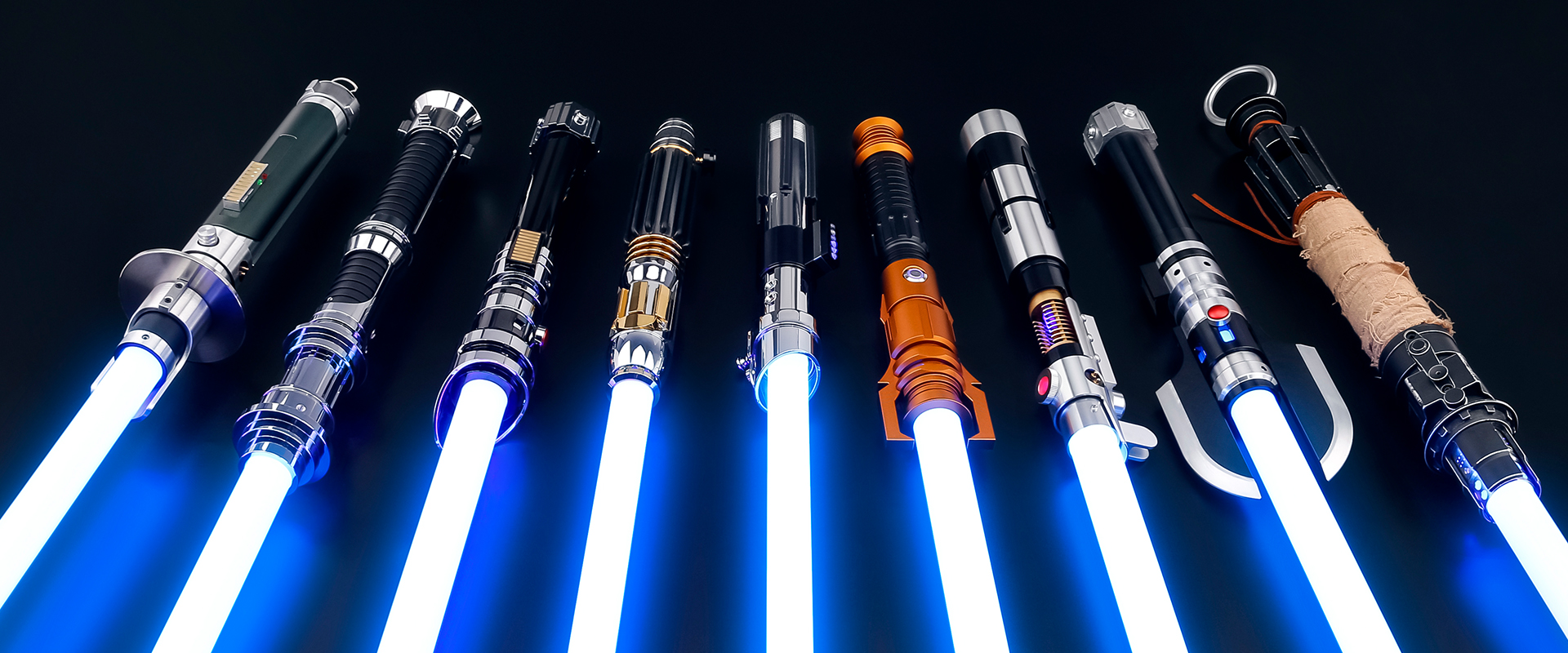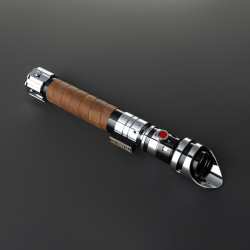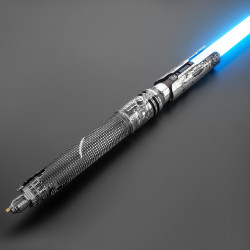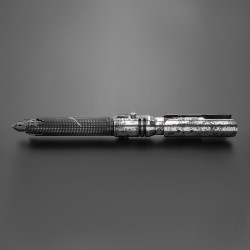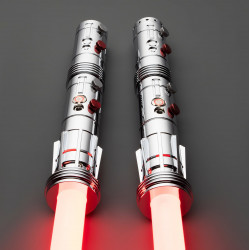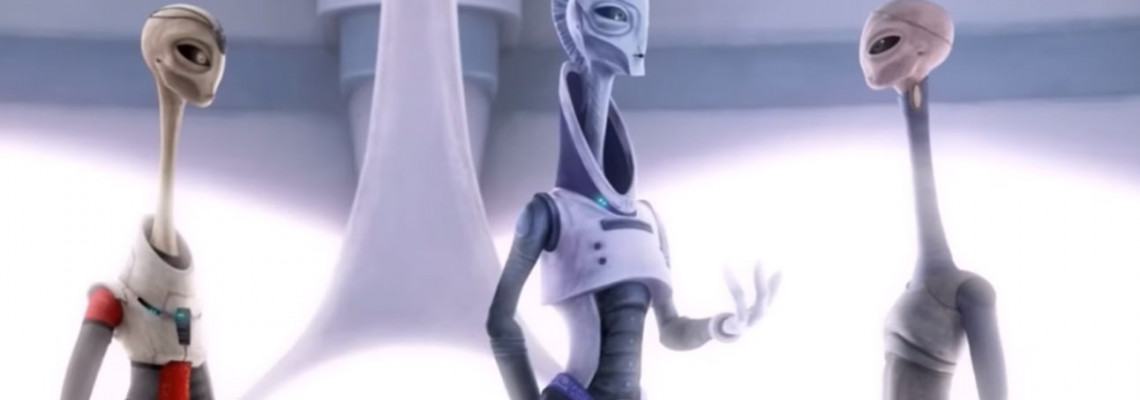
Kaminoans: The Master Cloners of the Star Wars Galaxy
1. Who are the Kaminoans?
The tall, lean, amphibious Kaminoans were a species of intelligent beings indigenous to the watery planet Kamino in Wild Space.
Living in huge domed cities perched on stilts above the sea, Kaminoans gained notoriety for their proficiency in genetic engineering and cloning. They also created other cutting-edge, non-biomedical technology for a range of customers, including the Galactic Republic.
2. Home world of the Kaminoans: The Planet Kamino
Beyond the Outer Rim Territories in Wild Space sits the secluded, water-covered planet Kamino. Its whole surface is submerged under water, and only great cities standing atop tall platforms are visible above the seas, which are constantly under attack from violent storms.
In the Star Wars story, Kamino's location is a mystery. Count Dooku removed the planet's existence from the Jedi Archives sometime before the events of Attack of the Clones, concealing it from the galaxy for many years. Thanks to their physical and political seclusion, the Kaminoans were able to concentrate on their genetic experiments without the scrutiny of the larger galaxy.
3. Physical Characteristics
Pale-skinned and elegant, Kaminoans had rectangular heads that rested on flexible neck bones and lengthy necks. Their eyes were big, almond-shaped, black, and possessed white pupils, which allowed them to see in the ultraviolet.
Female Kaminoans wore distinctive head crescents and were hairless, while males wore fin-like crests on their heads. They walked elegantly and glided on their long, delicate limbs, and their little feet were suited to the hard surfaces of their cities later on and the firm sea beds of Kamino. At age 11, Kaminoans had attained adulthood.
4. Society and Culture
The cities where the Kaminoans lived were enclosed and elevated above the ocean floor. They generally showed little visible emotion or personality, and their greatest accomplishment was the development of the clone soldiers.
Kaminoans were known for being isolationists who only interacted with strangers when doing so would benefit their finances. This isolationism resulted from a massive flood that changed their home world; instead of asking the Galactic Republic for help, they chose to change their planet and genetic makeup.
The Kaminoans survived on their own, but this experience made them distrustful of outside assistance. Despite their seclusion, they saw other planets as distractions rather than as superior to different species. Many Kaminoans thought that Kamino itself had everything they needed.
The Kaminoans had a tradition of pilgrimaging to the submerged remnants of their ancient cities, even as they adopted scientific logic. The domed architecture was a defining feature of both ancient and contemporary Kaminoan cities.
5. Role in Cloning
Kaminoans have long been known to be skilled cloners. Around 33 BBY, Jedi Master Sifo-Dyas hired them to build an army for the Galactic Republic using the genetic blueprint of famous bounty hunter Jango Fett. The Clone Army was created as a result of this endeavor and played a crucial role in the Republic's military strategy throughout the Clone Wars.
Their civilization has a complicated ethical system around cloning; although they are skilled at it, they struggle with the consequences of their inventions. Important individuals, including Kamino Prime Minister Lama Su and his assistant Taun We, played crucial roles in managing cloning operations.
6. Notable Kaminoans
6.1 Lama Su
One of the most well-known Kaminoans in the Star Wars story is Lama Su. He is Kamino's prime minister and is in charge of managing the planet's cloning activities.
Through her facilitation of the agreement with Jedi Master Sifo-Dyas to create clone troopers using Jango Fett's genetic blueprint, Lama Su was instrumental in the formation of the Grand Army of the Republic. His persona, which embodies the characteristic Kaminoan attitude of detachment and concentration on intellectual pursuits, is portrayed as extremely intelligent and slightly distant.
6.2 Taun We
Taun. Another notable Kaminoan, We, is well-known for serving as Lama Su's administrative assistant. She is in charge of running the cloning facilities and dealing with customers who want to use them.
Taun We is distinguished by her professionalism and serene manner, which reflects the stoic essence of her kind. During his journey to Kamino in Attack of the Clones, she helps Obi-Wan Kenobi by giving him information about the clones and how they were made.
6.3 Nala Se
A Kaminoan scientist named Nala Se is also essential to the cloning process. She is presented as a talented geneticist who helps create the clones, even modifying their behavior to guarantee their allegiance to the Jedi.
As she struggles with her part in building an army that will eventually be used for more sinister ends during the advent of the Galactic Empire, Nala Se's character deepens the ethical issues underlying cloning.
7. History
7.1 Rise of Kaminoan Civilization
The Kaminoans established their civilization on a remote planet close to the galaxy's edge. The Kaminoans are from the planet Kamino, which is in Wild Space outside the Outer Rim Territories. Although they have a close relationship with the oceans, they were originally a land-based species.
The Kaminoans were forced to adapt as their globe emerged from an ice age, and the land was submerged by a massive flood brought on by the melting ice. Later, people built tall, stilted cities to rise above the ocean's surface after first moving to higher ground. These imposing structures replaced earlier wattle-and-daub buildings.
The Kaminoans employed aiwhas, which are enormous water animals, to move between their settlements. Fearing colonization, resource depletion, and cultural degradation, they decided to rely on their talents even though they might have asked the Galactic Republic for help.
The Kaminoans also protected many land-dwelling species. They adapted the planet's fauna and flora to withstand the significant environmental changes. In addition to harboring the animals they had rescued, their enclosed cities shielded them from severe winds and rainstorms.
7.2 Creation of the Grand Army of the Republic
Even though the Kaminoans were cut off from most of the galaxy, they were known for being very skilled geneticists, especially when it came to cloning. Although Kamino was not well recognized throughout the galaxy, rumors of their sophisticated genetic and engineering work were circulating in some underworld regions.
The Kaminoans even ran a cloning lab on the planet Bora Vio for a while, but they finally abandoned it, leaving the clones they had produced there. Jedi Master Sifo-Dyas found the Kaminoans and gave them the task of forming a Grand Army of the Republic.
Kaminoans had previously constructed clone armies, but Sifo-Dyas' request was particularly bold; still, they adjusted and carried out his directive. However, after Darth Tyranus paid the Pyke Syndicate to shoot down Sifo-Dyas' spacecraft and kill him, the Sith took over the project.
In addition, Tyranus employed the bounty hunter Jango Fett as the clone army's genetic model. When the army was completed, it was delivered to the Republic after the clones had matured for ten years.
Obi-Wan, the Jedi Knight In pursuit of Jango Fett, who was embroiled in the assassination plan against Senator Amidala, Kenobi later visited Kamino. Prime Minister Lama Su of Kaminoa met with Kenobi during his tour, and he assumed he was there to examine the Grand Army.
Shortly thereafter, the Galactic Senate gave Supreme Chancellor Sheev Palpatine—who was actually Darth Sidious—emergency powers to use the clone army to combat the Confederacy of Independent Systems. The Clone Wars began with the First Battle of Geonosis when the clones were first used under Jedi leadership.
7.3 Kamino's Role in the Clone Wars
The clone army's formation catapulted Kamino into galactic prominence and secured them a seat in the Galactic Senate, where Senator Halle Burton was elected in acknowledgment of her contribution to the clone industry. But since Kamino was the Republic's only supplier of clones, the Confederacy turned Kamino into a prime target.
The Confederacy attacked Kamino in 21 BBY, but the Republic prevailed in the Battle of Kamino. In a ceremony held in one of the hangars in Tipoca City, where a number of Kaminoans were present, clones Echo and Fives were promoted to ARC troopers after Captain Rex declared that the Confederacy would not attack Kamino again very soon.
Fives returned to Kamino later in the conflict when clone Tup inexplicably killed Jedi General Tiplar during the Battle of Ringo Vinda. This incident happened because Order 66 was activated early due to a glitch in Tup's biochip, a behavioral modification device that was covertly placed in all clones.
Despite Kaminoan Nala Se's best efforts to hide the chips' existence from the Jedi, Fives finally told Jedi Master Shaak Ti about them. Before Fives could alert the Jedi that the chips were a component of Palpatine's scheme to turn the clones against their Jedi masters, he was killed.
In order to allow the Sith to obliterate any remaining proof of the plan, Palpatine gave Nala Se the chips that had been taken from Fives and Tup.
7.4 What Happened to the Kaminoans During the Rise of the Galactic Empire?
The Kaminoans' production of clone warriors was threatened by the Galactic Empire's recruitment efforts. Chancellor Palpatine, the Sith Lord who surreptitiously oversaw the Republic's transition into the Empire, reorganized the Republic into the First Galactic Empire after he issued Order 66, which exterminated the Jedi.
According to Admiral Wilhuff Tarkin, Emperor Palpatine no longer backed the Kaminoans' cloning effort as he had during the Clone Wars, despite their desire to maintain their ties with the newly established Empire.
Lama Su suggested developing a better kind of clone, one that went beyond the degrading Jango Fett template, after understanding that the Empire's new training program for enlisted soldiers—people who actively join the military, unlike clones—endangers the future of Kaminoan cloning.
Senator Halle Burtoni, meantime, became suspicious of Lama Su's attempts to work with the Empire on Coruscant because she believed that the Empire would eventually turn on her people. After becoming overly involved in Imperial matters and learning that Vice Admiral Rampart was diverting funds intended for Kamino to other Imperial initiatives, she lost her Senate seat.
In the end, the Empire closed Kamino's cloning facilities, taking only the clone soldiers, cadets (young clone trainees), equipment, embryos (early stages of clone development), and any Kaminoans considered necessary, such as Nala Se. Following this, the Empire demolished all known Kaminoan cities, including Tipoca City, as well as any infrastructure that remained on the planet.
Only a small number of Kaminoans remain, dispersed throughout the galaxy after the entire population was forcibly rounded up and banished. After securing Kamino's cloning technology, the Empire moved its future cloning operations to Mount Tantiss, a facility on the distant planet Wayland. Despite her reluctance, Nala Se was brought there to help with these initiatives.
Senator Riyo Chuchi's intervention, which involved working with the reluctant Halle Burtoni, allowed the truth about Kamino's devastation to come to light. Emperor Palpatine passed the Imperial Defense Recruitment Bill, which increased the size of the Empire's enlisted army, using the scandal as an excuse to shift the burden to Admiral Rampart and his clone warriors.
Later, when the Empire was in power, the pirate Hondo Ohnaka noticed that Kaminoans were no longer common in the galaxy. Some Kaminoans who were still alive joined the Alliance to Restore the Republic, also known as the Rebel Alliance, but it was challenging for them to work with other rebels because of their history of unethical medical procedures and their part in building the Empire's army.
After obtaining the Kaminoan cloning technology, Emperor Palpatine's Sith Eternal cult employed it in a procedure known as "Strand-Casting," a technique for producing modified or engineered life forms. The goal was to create bodies that could house Palpatine's spirit, guaranteeing that he could rule even after he passed away.
8. The Kaminoan Emblem
During the Clone Wars and the Republic Era, the Kaminoan government and clone cadets adopted this Kaminoan emblem. They wore the insignia on their uniforms as clone cadets preparing to become Republic clone soldiers. Even during the Imperial Era, the symbol was still in use. Throughout the Galactic Empire and beyond, scientists working on projects supervised by Imperial Military officials wore beige, black, and white uniforms. When he arrived at the facility to greet Chief Medical Scientist Nala Se, a medical officer named Scalder donned this clothing.
Navarro also wore the uniform worn by Gideon's Imperial remnant members. Clone specialist Penn Pershing wore a beige variant of the uniform with a patch bearing the insignia and black stripes framing the yoke, while two scientists at Moff Gideon's Nevarro outpost wore a gray version with the same patch but without the black stripes.
9. Kaminoans in Star Wars Canon and Legends
Although they are portrayed somewhat differently in Legends and Star Wars Canon, the Kaminoans are significant characters in both. The Clone Wars and Order 66 events mark the pinnacle of Canon's emphasis on cloning. Their work reappears in Star Wars: The Bad Batch, which delves deeper into Kaminoan cloning and suggests that they were still experimenting after the Clone Wars. Long after Kamino's fame faded, Kaminoans are shown in Legends to have been engaged in many cloning endeavors, including the development of Force-sensitive clones and experiments.
In addition to the movies and animated series, Kamino and its residents have made appearances in video games, comic books, and books, all of which emphasize their skill at cloning and their icy detachment.
